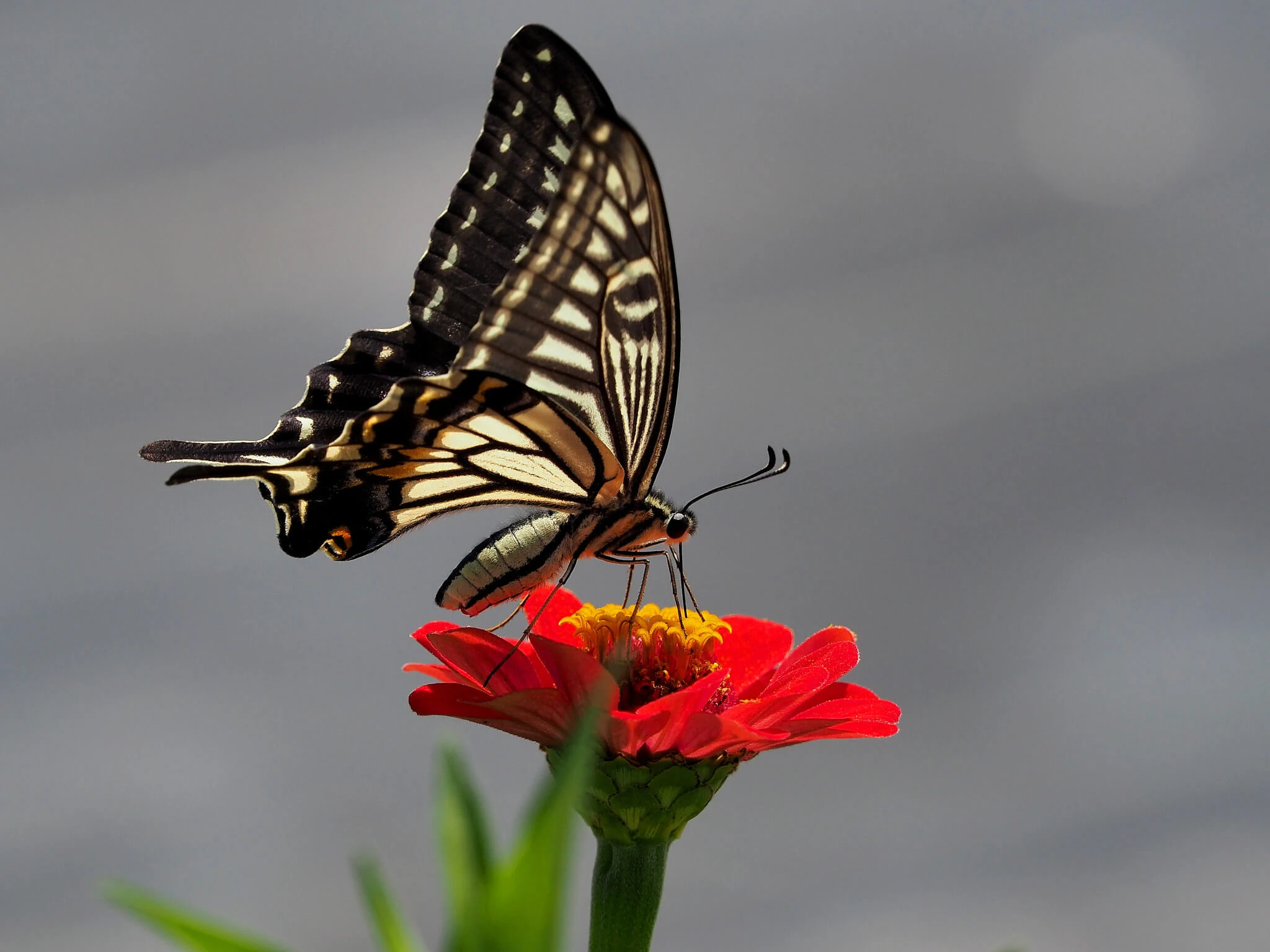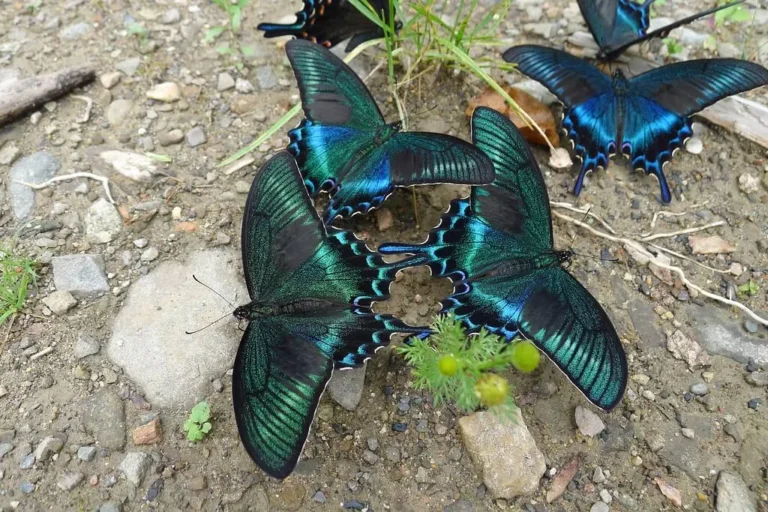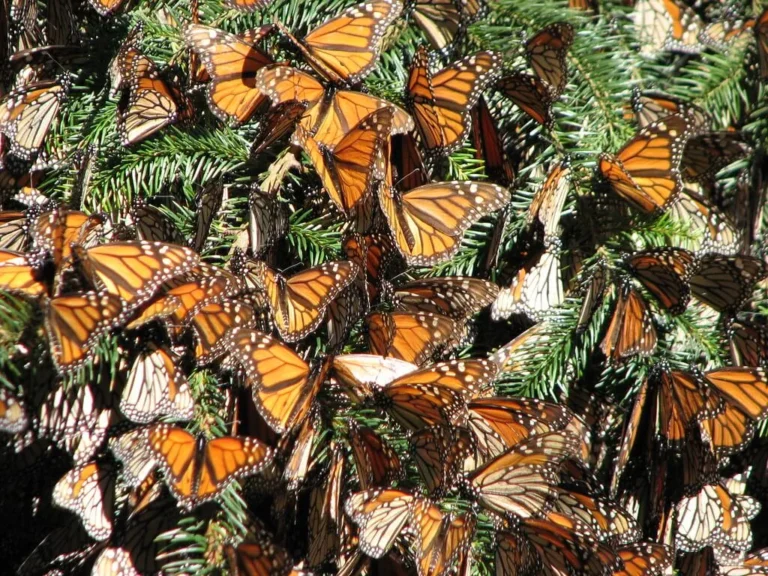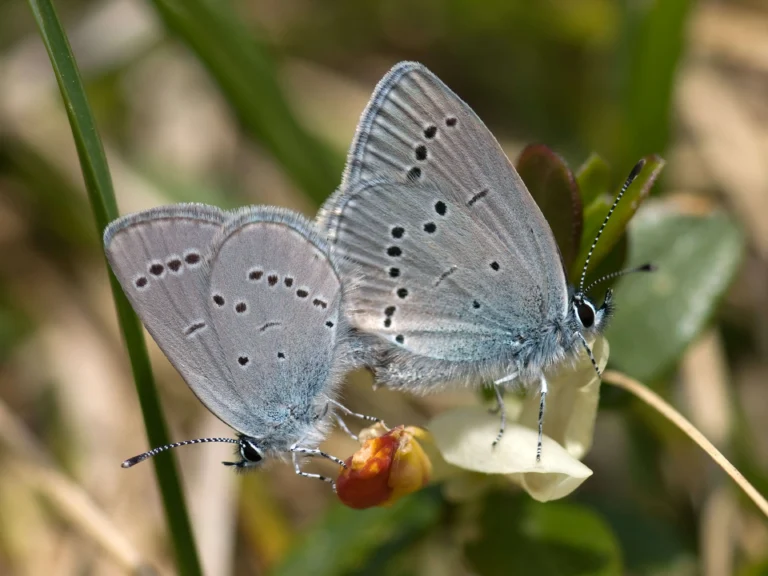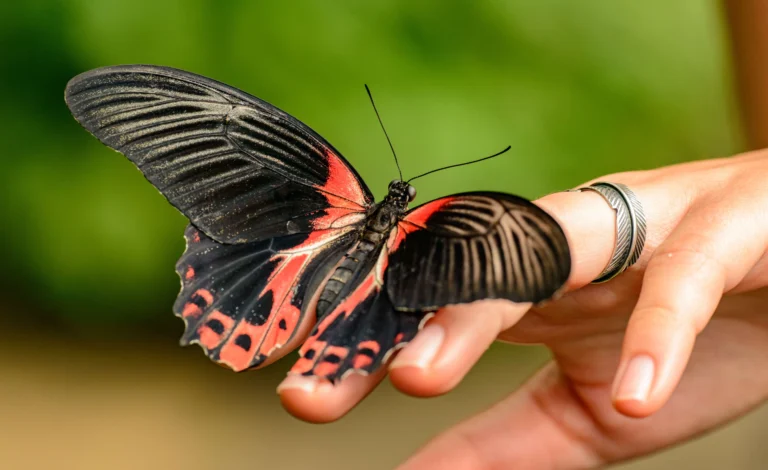Do Butterflies Have Teeth? The Mystery of Their Mealtime
Butterflies don’t have teeth. They use a special tube called a proboscis to drink nectar from flowers. This proboscis is their way of eating. Unlike their caterpillar stage where they chew leaves, adult butterflies sip their food. Over time, nature gave them the perfect tool to match their diet, making their life truly unique and fascinating.
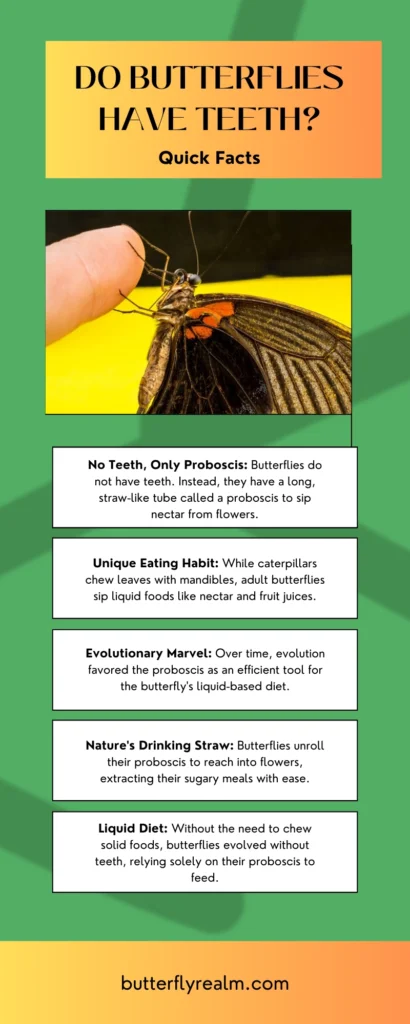
Table of Contents
Introduction
Butterflies are beautiful, aren’t they? When we see them, we often think of their colorful wings and their graceful movements from flower to flower. But when we look deeper into butterfly anatomy, there’s so much more to uncover and learn. One fun question some people ask is: Do butterflies have teeth?
This might seem like a strange question. But when we start to think about how butterflies eat and live, it becomes interesting.
In this article, we will talk about the world of butterflies. We will look at how they eat, if they have teeth and many other cool facts. So, let’s start our journey into the world of these amazing insects!
Anatomy of a Butterfly’s Mouth

Butterflies are unique in many ways. If we take a moment to explore the butterfly anatomy, we find one of the things that makes them so special is the way they eat. Their mouth, different from ours, is specifically adapted for their butterfly diet.
What is a Proboscis?
If you’ve ever observed a butterfly, you might have noticed it extending a slender, tube-like structure into flowers. This is the proboscis, their specialized tool. Much like how we use a straw to drink, butterflies utilize their proboscis to access the nectar.
How the Proboscis Works
Butterflies are smart. They keep their proboscis safe when they’re not eating. It stays rolled up, tucked away. But when they find a flower they like, out comes the proboscis! It unrolls so the butterfly can reach the nectar hidden deep inside the bloom.
Why is the Proboscis Important?
Why is the Proboscis Important? The proboscis serves as a crucial tool for the butterfly, acting as their primary means to extract nectar, their energy source. Occasionally, they even use it to consume water.
How Did the Proboscis Come About?
Nature is full of wonders. Over lots and lots of years, butterflies changed to be better at living in their world. This slow change is called evolution. The proboscis is one of the things they got from this change. It’s perfect for their needs.
Are There Other Parts of a Butterfly’s Mouth?
Yes, there are! Besides the proboscis, butterflies have something called labial palps. These are like tiny hands by their mouth. They touch flowers with them. This helps the butterfly figure out if the flower’s nectar is tasty.
In short, while butterflies don’t have teeth like us, they have some cool tools to help them eat!
How Butterflies Eat
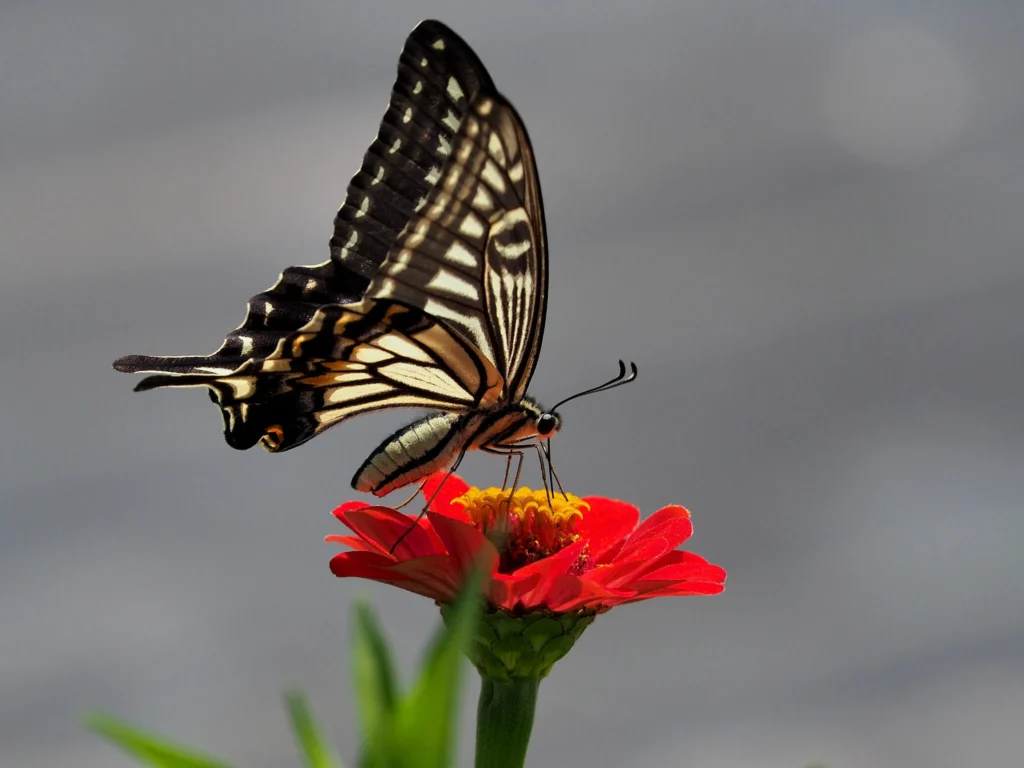
Watching butterflies is a treat, right? They flit around gardens, stopping at flowers. It looks like they’re dancing, but did you know they’re having their meals? Let’s see how these colorful creatures fill their tummies.
The Nectar Trail
When we think of butterflies, we often think of flowers. And for a good reason! Flowers have a sweet juice called nectar. Butterflies love nectar! With their handy proboscis, they sip this sugary liquid, much like how we use a straw to enjoy our favorite drinks.
How Do They Find Nectar?
It’s a big world with many flowers. How does a butterfly choose? Their secret weapon is their proboscis. It’s not just for sipping; it’s for tasting too! They go from one flower to another, giving each a little taste. Once they find a flower with the perfect nectar, they dive in, drinking as much as they can.
Find out Monarch Butterflies Diet In Our Detailed Guide.
Flowers: More Than Just Food
Flowers aren’t just restaurants for butterflies; they’re also nurseries. When it’s time for a butterfly to lay eggs, they pick a flower or a plant. The baby caterpillars will have food as soon as they hatch. Flowers really are the heart of a butterfly’s world.
Do Butterflies Eat Only Nectar?
Mostly, yes. But they like a little variety too. On some days, they might find a juicy fruit that’s fallen on the ground and is going soft. To them, this is like a special dessert.
And sometimes, they land on wet spots on the ground. They’re not playing in puddles; they’re licking up minerals. Think of it as butterflies taking their daily minerals.
Why No Teeth?
Now, with all this talk of eating, you’d think they’d have teeth. But no! Everything butterflies eat is already in liquid form. There’s no need to bite or chew. So, nature didn’t give them teeth. Instead, they got the proboscis, a tool that’s just right for them.
Butterflies might be small, but their eating habits are big on wonder. They’ve figured out their own special way to get all they need, and it’s simply beautiful to watch.
Disocver What does it mean when a butterfly lands on you? For many, it’s a sign of the butterfly’s connection to the world around it.
Comparing Butterflies to Other Insects

Butterflies are just one kind of insect in the vast realm of insect species out there. Each one has its own unique method of eating. So, when contrasting the butterfly diet and anatomy with other insects, we find intriguing differences.
Insects with Biting Power
Some insects have strong jaws. Think of ants, beetles, and dragonflies. They can bite and chew their food. They have mouthparts called mandibles that help them do this. It’s like they have their own set of tools to eat.
How Do These Insects Eat?
Beetles might bite into leaves or wood. Ants can carry food pieces back to their homes. Dragonflies catch other tiny insects while flying. Their jaws help them hold onto their food and eat it.
Butterflies vs. Other Insects
Now, butterflies don’t bite or chew like these insects. They have their proboscis to sip liquid food. So while a beetle might munch on a leaf, a butterfly will sip nectar from a flower.
Different Tools for Different Jobs
Just like we use forks for salads and straws for drinks, insects have different mouthparts for different foods. Some have jaws to bite, some have straws to sip, and others have sponge-like parts to soak up food.
It’s amazing to see how each insect has its own special way to eat. Nature sure is smart in giving everyone what they need!
The Evolutionary Aspect

When we look at butterflies, we’re seeing the result of a long journey. This journey is called evolution. It’s how animals change over time to better fit their world. Let’s dive into how butterflies have changed over time.
A Trip Back in Time
A long time ago, the ancestors of butterflies might have been quite different. They might have had different ways of eating and living. Over time, as the world around them changed, they had to adapt.
From Baby to Adult: A Big Change
Butterflies, when they’re young, are called caterpillars. And caterpillars eat differently than adult butterflies. They have small parts called mandibles, which help them chew leaves. It’s a lot different from the sipping straw of grown-up butterflies.
Why the Big Change?
As caterpillars grow, they change into butterflies. This change is called metamorphosis. When they become butterflies, their diet changes too. They move from eating leaves to drinking nectar. So, their mouth changes to help them eat better.
Nature’s Magic: Adapting to a New Diet
As the world changed, flowers became an important food source for butterflies. To drink nectar from these flowers, butterflies needed a tool. That’s how the proboscis came into the picture. It helped them get to the nectar easily.
It’s like a story, isn’t it? From chewing caterpillars to sipping butterflies, these insects have had an exciting journey. Nature always finds a way to help creatures adapt and thrive.
Mythbusting Common Misconceptions
We often hear stories or myths about things in nature. Butterflies are no exception. Some people believe things about them that aren’t true.
For instance, while many perceive them as symbols and get a butterfly tattoo attributing specific meanings to them, it’s essential to understand the real facts about these insects.
Let’s set the record straight on some common myths about butterflies and their teeth.
Myth: Butterflies Have Tiny Teeth
Some think that butterflies have tiny teeth hidden inside their mouths. But that’s not true. As we’ve learned, they have a proboscis, a straw-like part, to sip nectar. No teeth involved!
Where Did This Myth Come From?
It’s hard to say. Maybe people thought that because caterpillars chew leaves, butterflies might have tiny teeth too. But as we know, butterflies and caterpillars eat in very different ways.
Experts Have the Answer
People who study insects, called entomologists, have looked closely at butterflies. They’ve found no teeth. So, it’s safe to say that the toothy butterfly is just a fun story, not a fact.
It’s always good to ask questions and find the truth. Just because something sounds fun or interesting doesn’t mean it’s true. Butterflies are amazing just the way they are, no teeth are needed!
Conclusion
After our deep dive into the world of butterflies, we’ve learned quite a bit. Let’s wrap up everything and see what we’ve discovered.
Butterflies: Nature’s Marvels
Butterflies are truly wonders of nature. With their colorful wings and graceful flight, they add beauty to our world. But there’s more to them than just looks. They have unique ways to eat and live that are just as fascinating.
Adapting to Their World
We’ve seen how butterflies don’t have teeth but have a special part called a proboscis to drink nectar. This tool is perfect for their needs. Nature always finds a way to give creatures the right tools.
A Journey of Change
From being leaf-chewing caterpillars to nectar-sipping butterflies, their life is a story of change. It’s a lesson in how nature can make big shifts to help creatures thrive.
Busting Myths, Knowing Truths
We cleared up some myths about butterflies. Knowing the truth helps us understand and appreciate them even more. It’s always fun to learn new things!
A Final Thought
Butterflies are more than just pretty insects. They play a big role in nature, helping flowers grow by spreading pollen. Let’s remember to care for them and their homes. Every creature, big or small, has its special place in our world.


